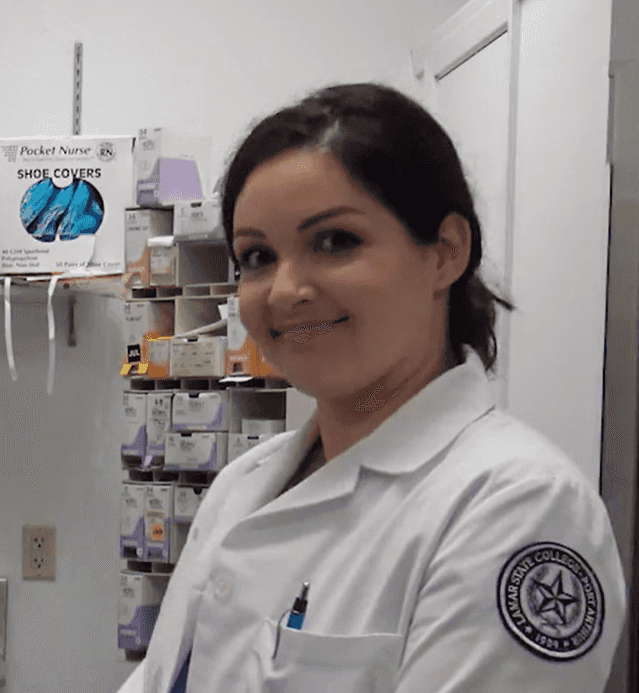Surgical Sutures
Transcription
Surgical sutures are going to come pre-sterilized and pre-packaged. They come in a peel pack. And like any sterile item, we need to check its integrity before we open. We look for holes, tears, and watermarks, and we check the expiration date.
The way that we open a peel pack is by what we call a "knuckle roll." We will take the suture, once we've checked its integrity, and we are going to open up, and we're going to place our knuckles side-by-side with our thumbs on top.
Once we do this, we're going to do a two-action motion. I'm going to peel this open like a banana, and at the same time I'm going to move it forward. I want to be careful that I don't reach over the sterile field because that would cause fallout contamination. And here is a quick example of how to open a peel pack.
Without reaching over the Mayo stand, the suture went from the sterile environment of the package through an arc in the air to the sterile Mayo stand. We wanted to make sure that as we opened it, that our suture did not slide across the heat seal because that would have contaminated it.
To load surgical suture is a two-handed operation. If we look at the package, we're going to see that the package has all the information that was on the box and the package that it came in. We'll see the gauge of the suture by the USP scale, we'll see the actual silhouette of the needle. This silhouette is the exact size of the needle.
When we go to load this, we have to remember that when we load it, it needs to go in that surgeon's hand the way he's going to use it the first time. The needle gets divided into thirds. This is the tip of the needle, the center of the needle, and this is the swaged on end.
These needles are hollow. The suture goes into the needle and then it gets crimped on. I never wanna crimp directly where the needle and the string meet, I want to come a third of the way away from that. I'm going to put my needle holder on and click it. And you'll hear it click one time. I'm going to pull out, and I often do this - with one hand I'm going to grab up by the needle and at the other one I can pass.
When it goes to the surgeon's hand, it goes in his hand the way he's going to use it. All he has to do is turn his hand.
Now on my end, my hand should be up above the box slot of the needle holder. The tip of that needle always goes toward the thumb of whoever I'm handing it to. When I go to hold it, I'm going to rock my wrist and I'm going to pop it in the palm of their hand, and then when they take it, I let go of this.
Crystal Romero's a surgical tech student enrolled in the program at the moment. What I'm going to do is load this suture and hand it to her.
Holding the suture in my left hand, I open up the needle driver with my right, and I apply it one-third the distance away from the swaged on end.
Now, I can either change hands, hand it to her, and you'll notice that the tip of the needle always goes toward the thumb of the surgeon or whoever is sewing. I'll pull the package off, and she will immediately begin to sew without having to readjust the needle.
We know that we have proper alignment with our needle to the needle holder when we see this T-shape. The needle makes the top bar of the T, and the needle holder makes the straight up-and-down T. We want to be a third of the distance away from the swage - unless we're using a very large needle, and then we can go a little bit more to the midline and get to what our surgeons often call the "50-yard line," right in the middle.
Some surgeons will actually ask you to tilt up the needle holder just a bit. That is a personal preference, and if that's how they like to be handed, that's what we do.
I can take the string, move it out of my hand, and give it to the surgeon. And always - the sharp points to them.
Crystal - show us the hand signal. Usually our surgeon - if our patient is awake or if we're doing it under local anesthesia, the surgeon will give us the hand signal - give it to us again - and that let's me know that they want their stitch, and the patient didn't hear the word "stitch" or "suture" while they're not under anesthesia.


